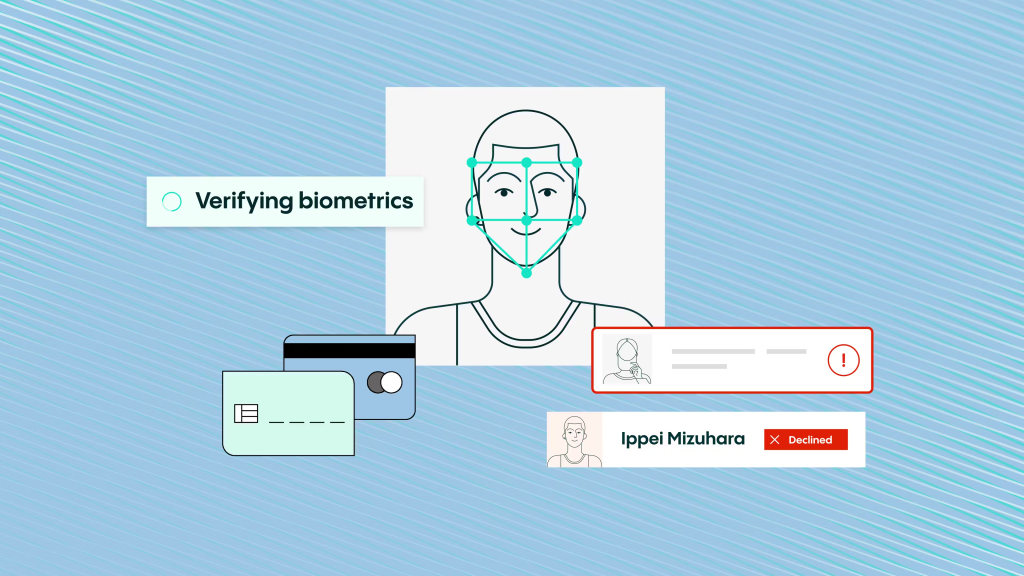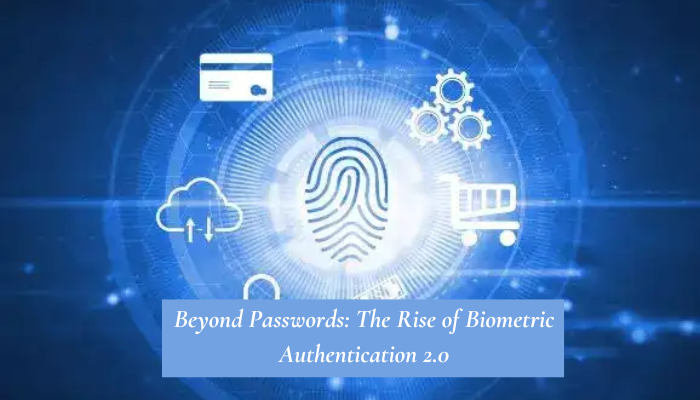In today’s digital world, keeping our personal information safe matters more than ever. Technology is changing every day and so are the ways to protect our personal data. In our daily lives, we use smartphones and computer devices to do our work. Shopping, banking, and chatting with friends and family are done on these devices. Biometric Authentication is important to keep these actions safe . We need strong and trusted ways to prove who we are.
Biometric authentication requires unique features of your body like your fingerprints, face, and voice to unlock devices and log in to apps. One can forget passwords or someone could steal it but your biometric is always with you and much harder to fake.
Biometric Authentication 2.0, this technology is getting even better. It’s becoming faster, more accurate, and more secure. New systems can even detect you in different lighting, from different angles, or even while you’re moving. Some can even tell if someone is trying to fool the system with a photo or recording. It becomes much harder for hackers to trick the technology.
Companies are also trying newer biometric methods like scanning your eyes or reading patterns in your heartbeat. These advanced methods make it easier for people to protect their data without needing to remember long passwords.
Biometric Authentication 2.0 is changing the way we think about security. It makes life easier for users and much harder for hackers. As more devices and services start using these smarter tools, we can expect a future where logging in is both simple and super safe.
Why Biometric Authentication Are Safer Than Passwords?

•Biometrics Are Unique to You :
Your fingerprint, face, voice, or IRIS is completely unique. No one else in the world has the exact same features. This makes it very hard for hackers to break in because they can’t simply guess your fingerprint the way they might guess a password.
•You can’t Forget Biometrics:
Biometrics are always with you, so you don’t have to worry about remembering anything.
•Harder to Steal or copy:
Passwords can be stolen through scams, data leaks, or hacking but stealing someone’s fingerprint or voice is much more difficult. New technology also checks if the biometric data is real and from a live person so photos and recordings won’t fool it.
•Faster and More Convenient:
Biometric login is quick — you can unlock your phone or log into an app and just a second by looking at it or placing your finger on a sensor. This makes it more likely that people will use strong protection, rather than skipping it because it takes too long.
•Multi-Layered Security:
Biometrics can also be combined with other forms of security, like a PIN or password, to create two-factor authentication (2FA ). This adds an extra layer of protection, making it almost impossible for anyone else to access your account.
“Smarter, Faster, Safer: What’s New in Biometric Authentication 2.0”

Biometric authentication 2.0 brings smarter, faster, and more reliable security features than ever before. Earlier versions of biometrics could only recognize simple things like fingerprints or basic scans but now with biometrics 2.0, the technology can scan your face even in poor lighting or from different angles. It can easily tell the difference between a real person and a photo or video, so no one can fool biometric authentication.
Some systems are also using new types of biometrics, such as eye scans, heartbeat patterns, and even how you walk or type. These extra features make it harder for hackers to fake your identity.
On top of that new biometrics systems are faster and more accurate. They take less time to scan you, and they work better for people of all ages and skin tones.
Many devices now use AI ( artificial intelligence) to learn and improve every time you use them. This means your phone or app becomes better at recognizing you the more you use it. All these upgrades made Biometrics 2.0 a powerful tool for keeping our personal information safe and easy to access.
Biometric Authentication Isn’t Perfect: The Risks You Should Know
Biometric authentication is strong, but it also has some problems.The major problem is you can’t change it like a password if it gets stolen.This can be a risk for your whole life. Hackers can take advantage of your data if the company will not secure it safely.
Sometimes, biometric systems make mistakes. They may not work well if your face changes due to age, injury, or lighting. The system may let in the wrong person or block the right one. These are called false acceptances and false rejections.
There are also ethical concerns. One must know how their data is collected, who can see it, and if they give permission.
Not everyone can use all types of biometrics. For example, a person with a hand injury may not use a fingerprint scanner.
So, it is important to use biometrics with other safety methods and use them carefully.
The Future of Secure Access With Biometric Authentication
Biometrics are quickly becoming the foundation of modern digital security. As we move into a more connected world, where everything from phones to cars and homes. The need for fast, reliable, and secure excess is greater than ever. Traditional passwords and PINs are no longer enough to protect sensitive information.
In the future, biometric authentication will use advanced features of a person for more privacy. Likely to include heartbeat rate, typing style, speaking style and even the walking style which cannot be copied easily .
AI is one more advanced feature used in biometric systems to work faster and better. AI can easily detect a person’s voice, face and fingerprints and compare with stored data of that person.
AI can even detect a small change in a person’s features like his age and hairstyle. It is making the whole process tougher to get hacked.
CONCLUSION
Biometric authentication is the new form of securing your private information with better features. By using unique features of a human it can easily detect that the person Who is logging in that data is real or not.
Biometric authentication will evolve with the future development and using AI features, it is giving more and accurate results. However, there are chances of risk of collecting more private data by companies that is inevitable.
Therefore, many ethical and legal rules are formed to protect our data. It must be used properly to keep data safe ,secure and private.
Also Read : Best Strategies For Pinterest: 9 Ways Beginners Can Pin Smarter
Frequently Asked Questions
1.What is Biometric Authentication and how do they help to keep our devices safe .
It is a way to prove a person’s identity using their body features like fingerprint, face, voice, or even your eyes.
These features are unique to you , so devices can use them to make sure it’s really you trying to log in.
2.Is biometric authentication more secure than passwords?
Yes, because biometrics are unique to each person and much harder to steal in comparison to passwords.
3.Can someone hack my biometrics?
While It’s harder than stealing a password, biometric data can still be hacked if not stored safely. That’s why companies need to protect this data properly.
4. Will biometrics replace passwords completely?
In the future, it’s likely that biometrics will take over. Right now, many streams already combine biometrics with passwords for added safety and some devices even work using only biometrics.
5. What should you do to protect your biometrics data ?
You can’t change your fingerprint or face like you can change a password. That’s why we must protect biometric data carefully and use it responsibly.











